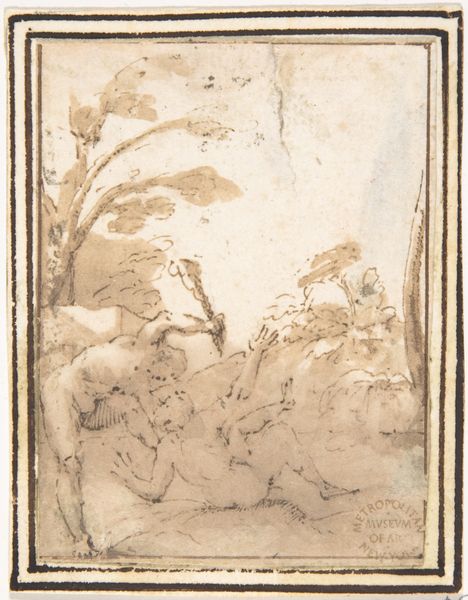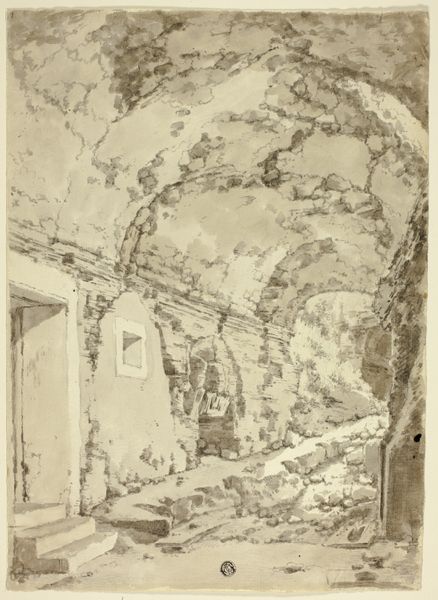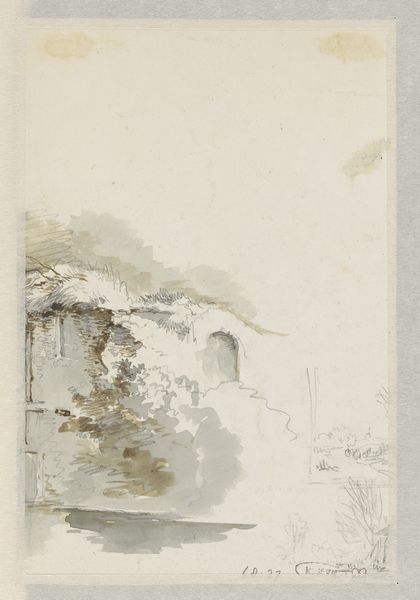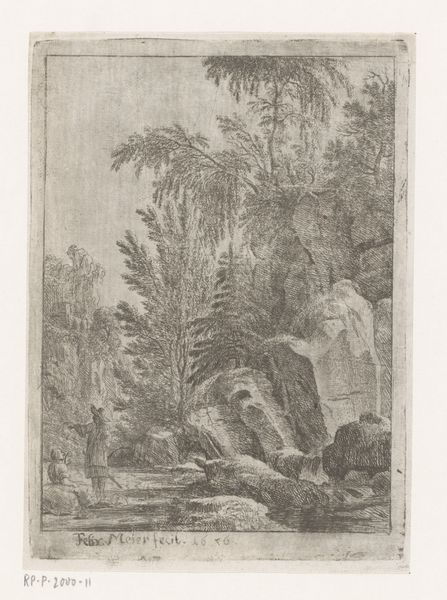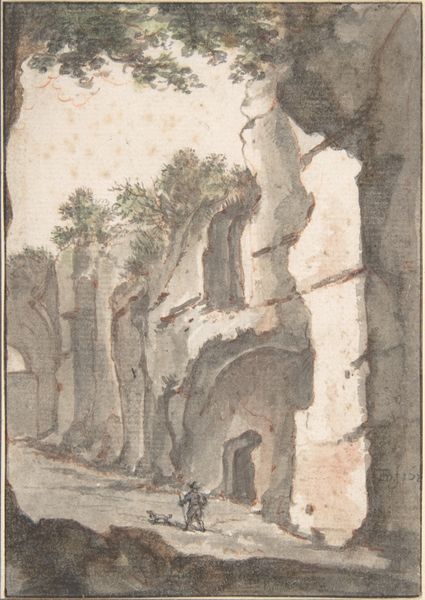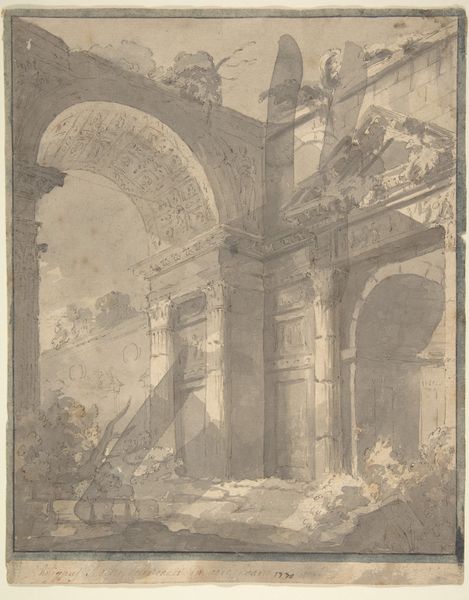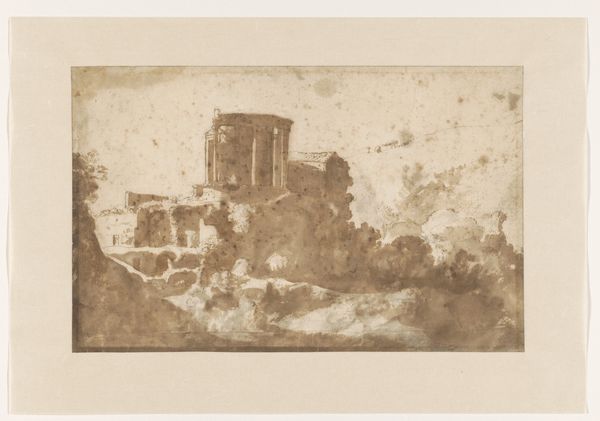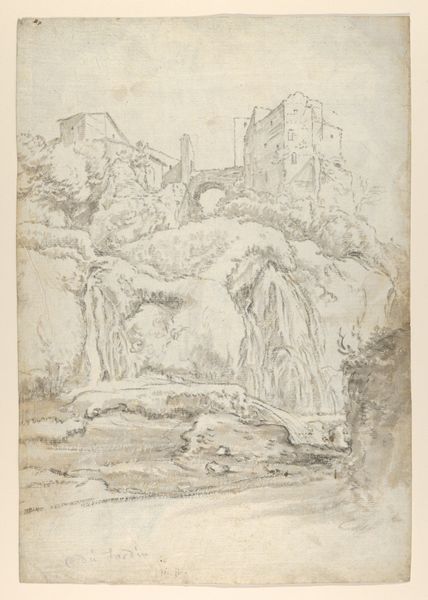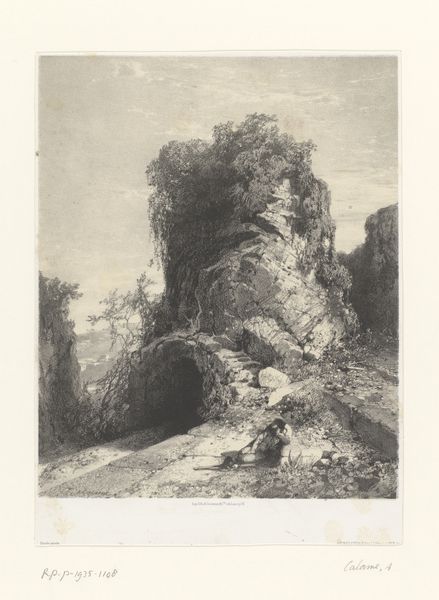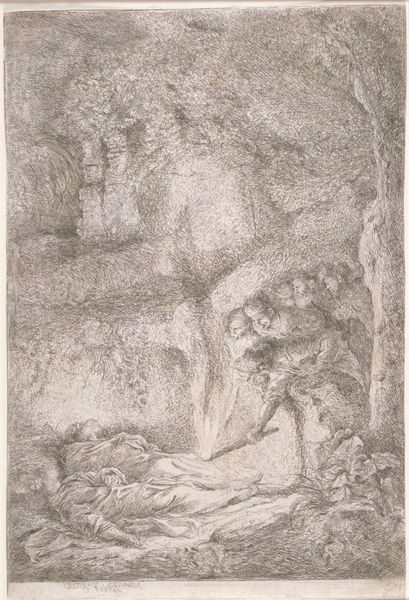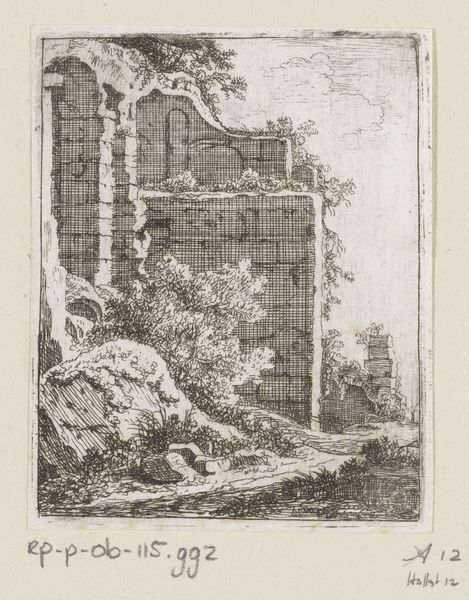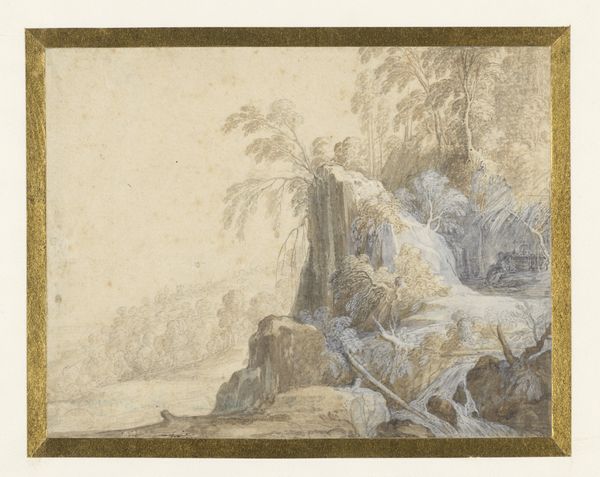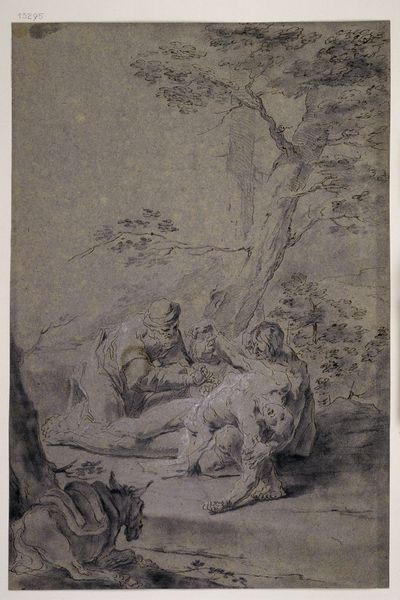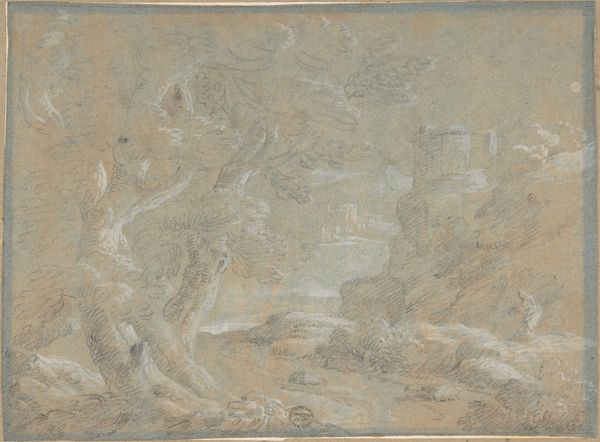
drawing, print, paper, ink, pencil, chalk, black-chalk
#
drawing
#
baroque
#
ink painting
# print
#
landscape
#
paper
#
ink
#
pencil
#
chalk
#
genre-painting
#
black-chalk
Dimensions: 393 × 276 mm
Copyright: Public Domain
Editor: Breenbergh's "Villa of Maecenas at Tivoli," created around 1627 using ink, pencil, and chalk, really captures this mood of decaying grandeur. There's something both melancholic and beautiful about how the architecture crumbles into the landscape. What stands out to you when you look at this work? Curator: I'm particularly interested in how Breenbergh situates the ruins. He's not just depicting a historical site; he's placing it within a specific socio-political context. Consider the early 17th century and the Dutch Republic’s engagement with classical antiquity. What might this idealized ruin represent to them? Editor: Maybe a connection to a glorious past, a kind of nostalgic reflection? Curator: Exactly. The ruin becomes a stage for contemplating history, power, and even the impermanence of empires. It’s also about the rise of landscape painting as a genre, with its own patrons, markets, and social meanings. Breenbergh wasn't merely drawing, he was participating in a discourse about Dutch identity. Do you notice anything about how the figures in the foreground relate to this? Editor: They seem really small and insignificant, almost swallowed up by the enormity of the ruin. Curator: And who are they, the "viewers," literally and figuratively, of this past? Breenbergh's work asks us to consider our relationship to history and the narratives we construct around it. How the powerful of the past became the sights of the future for people. Editor: That's fascinating, it really reframes how I see this drawing. It's not just a pretty picture, it's a statement about history and identity. Curator: Precisely. The beauty lies in its complexity and the questions it provokes about our own place in the ongoing narrative of time. It reminds us that what we choose to preserve and how we interpret the past is never neutral.
Comments
No comments
Be the first to comment and join the conversation on the ultimate creative platform.
